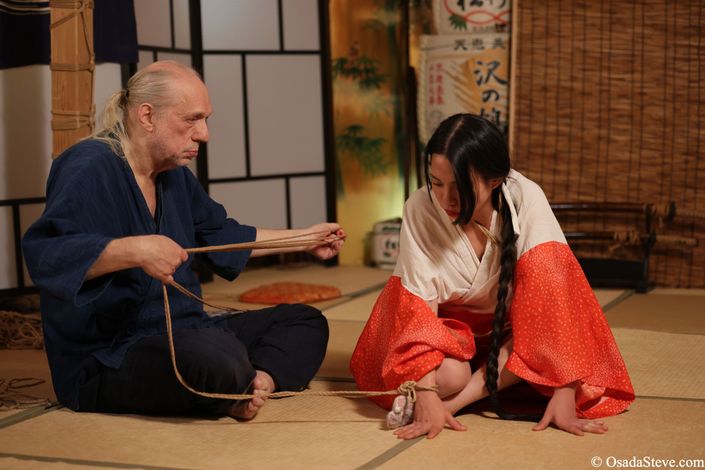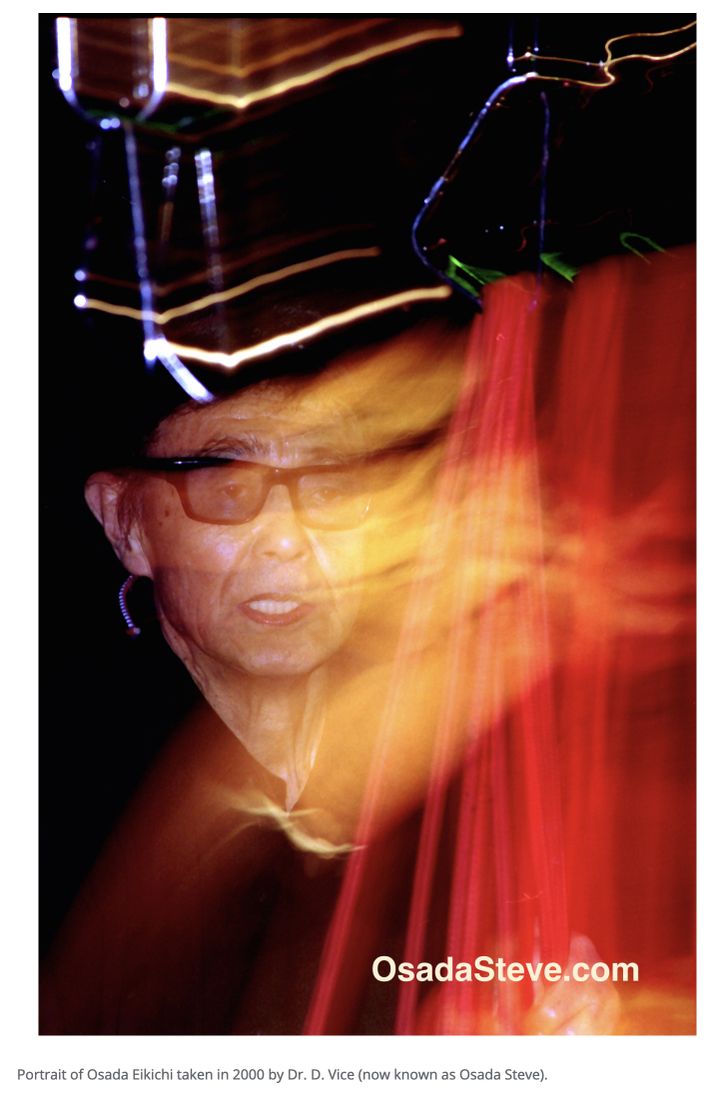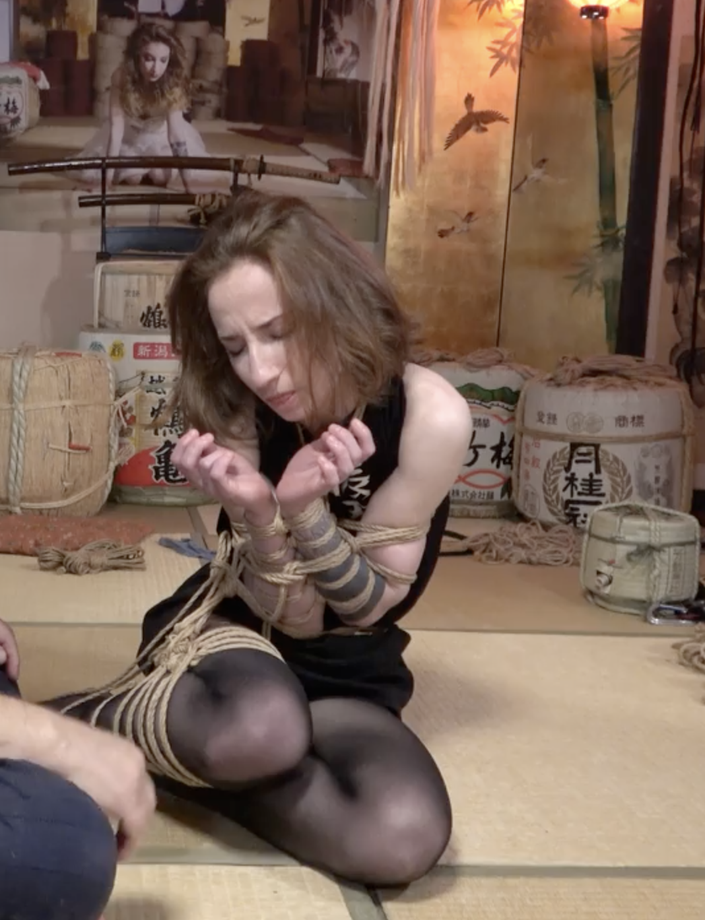The Ubiquitous and Iconic
Hishi (diamond, 菱) Pattern
There are multiple ways of building a shibari-style diamond harness. In this workshop were are treated to an attractive collection of them.
One common method is starting around the neck. Technically simple, yet a challenge to achieve symmetry and beauty.
The Neck Shackle (首枷)
In this workshop we are treated to a self-strangulation tie where the ball of the thumb of each hand is pushed against the neck by rope.
Yagami Ren sensei has previously shared two other rope chokes, and today we are treated to a third.
Performance
As a tradition of Yagami Ren (鵺神蓮) workshops the sensei is also treating his students to a jaw-dropping field test of the tie(s) previously covered.
Terminology
Hishi Shibari / 菱縛り -- A diamond harness that, because of its good looks, has gained popularity in Japanese manga and hentai publications and has also become a favorite crowd pleaser. It is often confused with the kikkou (hexagon, 亀甲) turtle shell pattern.
When the arms are left free this harness becomes a kinky contraption for parties and events. If you require more authenticity you may want the arms to be integrated into the tie. One example would be a hishigote (菱後手) with the arms restrained in the back.
(One important principle in kinbaku, and certainly in the Osada-ryu flavor of kinbaku, is that the arms need to be restrained at the very beginning of a bondage at all times.)
Harinawa / 張り縄 -- tensioning the rope from both sides (when constructing the diamonds / hishi / 菱). The harinawa also finds various applications with other ties, e.g. certain types of leg or arm binders.
Kubikase Shibari / 首枷縛り -- A kubikase is a neck shackle or pillory type of contraption. An Edo period penal tool placed around the neck of a sinner to encumber their freedom.
In this workshop the neck shackle is accomplished with rope.
Jimon Shibari / 自問縛り -- Jimon stands for 'asking yourself', or better, within the context of being neck-shackled by rope, spend some time on self-reflection.
The character ji (自) can be found in constructs such as jibun (自分, self), jibaku (自縛, self-tying), jizuri (自吊り, self suspension), jiyu (自由, freedom), jiyū no megami (自由の女神, statue of liberty), jiai shibari (自愛縛り, self-love bondage). The latter being part of the Osada-ryu school syllabus.
The character mon (問) can be found in constructs like mondai (問題, problem), gakumon (学問, study), shitsumon (質問, question), gumon (愚問, stupid question), nanmon (難問, difficult question).
Caution: Not all mon are equal. If you remove the square from 問 you'll end up with 門 (gate) as in 'The Nine Gates Of Osada-ryu' (長田流九つの門, Osada-ryu kokonotsu no mon).
Shibari (縛り) vs Nawa (縄)
In many cases these two terms are 'virtually' interchangeable. Especially when they are meant to describe a tying 'pattern', 'bondage' or 'shibarikata' (縛り方).
Example: kubikase shibari vs kubikasenawa.
In other words, depending on context, the term 'nawa' can either mean 'rope' or 'tie'.

Kubikasenawa (首枷縄)

Performance

Performance
Teaser Clip
The Curriculum
140+ minutes




